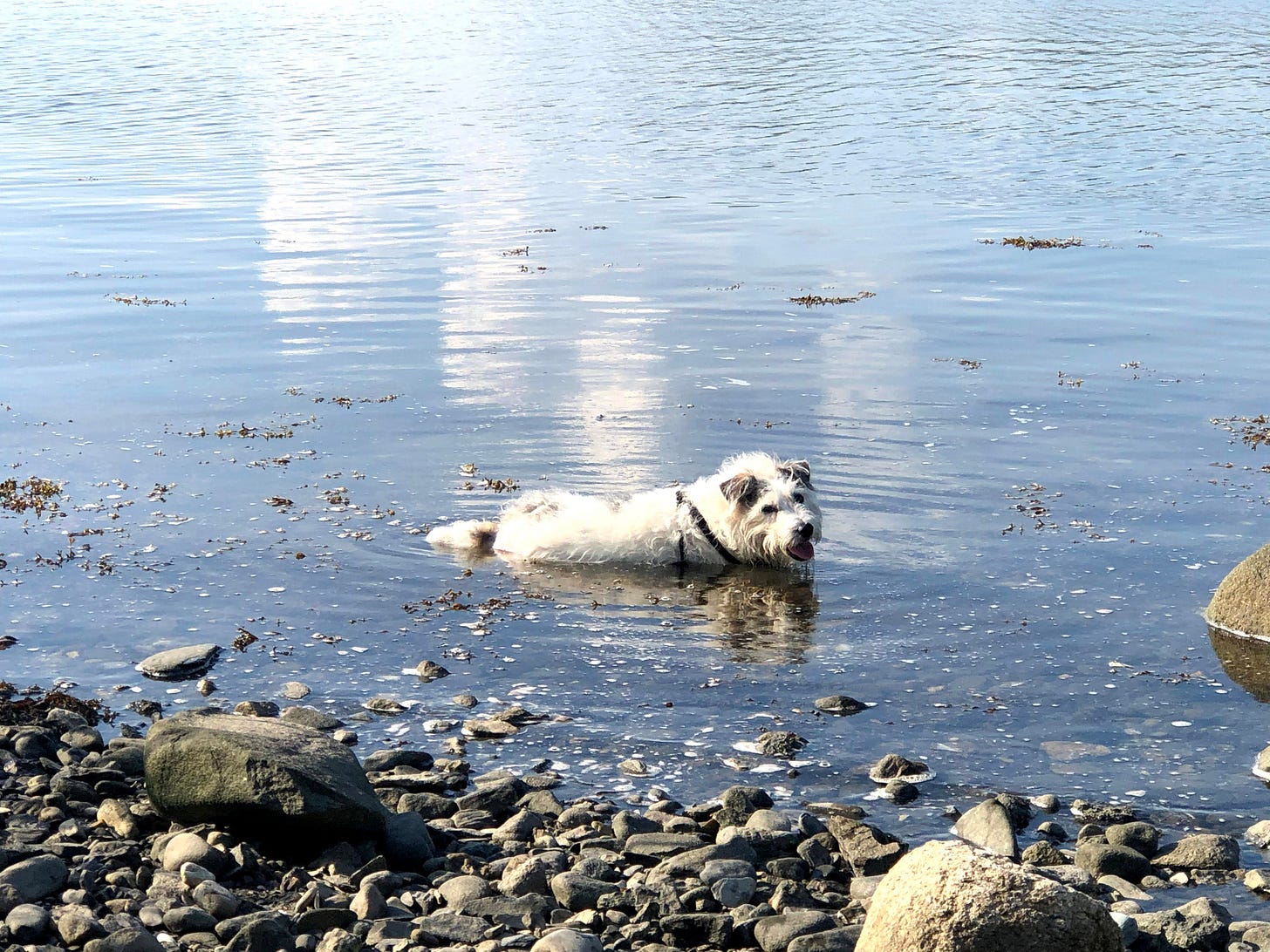One way to get communities to fight flooding
And maybe to fight Washington
I’m always looking for ways we can fight climate change and its effects in our local communities. That’s where many of our physical and financial risks lie — and it’s where we may be able to influence our more conservative neighbors who support the current trashing of climate actions in Washington.
One local effect of climate change: it’s rapidly driving up the cost of property insurance, affecting all levels of income. Some homes are now refused coverage. Let’s look at the flooding component of home insurance costs.
While homeowner’s insurance covers a wide range of, usually low, risks, like theft, fire, storms and accidents, flood insurance is almost always in place because the property is in a flood plain, coastal or inland, and is definitely at risk of flooding. And of not qualifying for a mortgage without flood insurance! Not every family sees this risk. Nationwide only 30% of homes in the highest risk areas have flood coverage. Less than 25% of the buildings flooded by Hurricanes Harvey, Sandy, and Irma were covered by flood insurance.
Flood insurance is available from the National Flood Insurance Program (NFIP). It is no longer written by most private insurance companies. Policies cost an average of $800/yr but go way higher depending on a property’s risk. Underpriced, premiums are rising fast. In 2024 they rose for the second year in a row at a double-digit rate nationwide. In six states they rose more than 20%. The most obvious reason for rate-hikes is the rising policy claims from this big effect of climate change - too much water..
How we can help
If we want uninsured homeowners to understand their risks and their need for flood insurance and flood prevention, one way is to help their towns join the NFIP’s Community Rating System (CRS). If their town is already a member, we could help them raise their own CRS Score and get a higher discount on residents’ flood insurance premiums.
The CRS (if the Administration in Washington allows it to continue) provides several of the benefits I’m looking for in climate action projects. It’s best known for creating a discount on flood insurance premiums for every property in town, but that’s the window dressing. A five or ten percent discount on an $800 yearly premium is not much . . . BUT the town’s actions to gain those discounts can have other bigger benefits to local homeowners. Those actions help spread an understanding across town of specific dangers and responses, bringing communities together to take action that can actually reduce damage to many properties.
Here’s how the CRS works.
Scoring
When a town is eligible within the CRS, it will get a rating which qualifies residents for a discount on their flood insurance premiums. Most communities enter the program at a Class 9 (5% discount) or Class 8 (10% discount) rating. As the town raises its score, each CRS Class improvement knocks another 5% off its residents’ flood insurance premiums. How do we get a rating? There are 19 different activities that can boost a town’s rating.
And these activities are the really important part of the program.
A town can boost its score at any time by, among other things:
Advising property owners and renters about how to make their neighborhoods more flood-resilient, and publicizing that service.
Promoting awareness for flood insurance.
Protecting buildings from flood damage by floodproofing, elevation, or minor structural projects.
Inspecting channels and retention basins regularly, and maintaining the drainage system’s flood-carrying and storage capacity.
Requiring real estate agents to advise potential purchasers of a flood prone property about the flood hazard.
Keeping flood prone land free of development.
There are currently 1,520 CRS communities, with over 3.6 million policyholders, accounting for more than 70% of all NFIP flood insurance policies.
An example
To their Municipal Code the township of Upper Makefield, PA added a section of regulations creating a Floodplain Administrator position in the municipal government, and requirements for construction located, even partially, within an identified floodplain area. We can check out the extensive flood-safety requirements in Chapter 8 of the township’s Municipal Code.
A few score-boosting actions in a few towns here and there doesn’t sound like much. Nor does five or fifteen percent off our flood insurance. But the little dollars a town or its citizen groups spend on stuff like berms, bioswales, retention ponds, rain gardens, permeable pavements, tidal gates, and expanded drainage systems around town can save really huge dollars in property damage. After all last year, flooding in CRS towns, and others, is estimated to have caused $200 to $500 billion in damage, with 27 weather disasters causing at least $1 billion in damages each.
And just think of all the flyers, hearings, committees, news articles, and other communications around the town that go into the adoption of these regulations! It’s an education for everyone - maybe even for those whose national politics has been against climate action.
What can we do?
Want to spend a little time adding to America’s CRS Scores?
Find out if our town, city, township or county is eligible for the CRS. There’s a list. For some reason certain states are not included; we need to research them town by town.
While we’re at it, check the towns where our family and friends live.
If the town is eligible, find out if anything is actually being done. Check the same list, which shows the latest rating. Class 10 means no qualifying actions taken yet.
If we’re in a town that we know has some flooding but we’re not on the list or are in Class 10, pick up the phone, call town hall, and ask the department responsible for flooding why they’re not in FEMA’s Community Rating System.
If needed, help recruit some community members to raise the pressure on town hall.
Once a conversation starts, discuss which of those 19 community actions could help the town qualify quickly for CRS membership - and prevent flood damage!
Since the election, I’ve been trying to suggest more effective climate actions the average American can take. They will require more time, effort, leadership, and thought. I hope that doesn’t put subscribers off. Each of us who’s concerned about slowing climate change and protecting against its ravages now has to work much harder than we did before Trump took over. I’d love to have your editorial suggestions.
Bill McKibben has been educating us for decades about the risks of climate change. Lest any of us forget about the costs of flooding, his The Crucial Years newsletter, How many climate blows before communities start to break? gives an intimate picture of people’s losses in some unexpected floods in recent years.
It’s a good read - and Bill’s newsletter is a great long-term source of updates on climate change at the personal level. Thanks, Bill!





Terry Nelson had trouble leaving this comment on the newsletter itself, so he sent it to my by email: "I heartily agree with your point about insurance and was just trying to point out that after the latest LA fires they will be having extreme difficulty in getting basic insurance to rebuild, even though they may be presently covered. I guess those with adequate coverage now may be able to but anyone who needs a loan may be in deep doo doo to get one. It definitely is a nation wide problem that will only get worse as time goes on and remains unaddressed as our new administration will certainly fail to do. That's pretty much it from me....thanks for you articles. I agree with you on pretty much everything and am trying to do what I can."